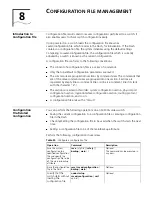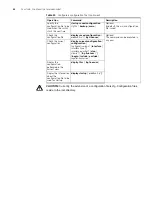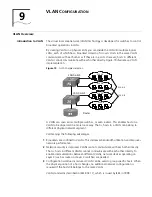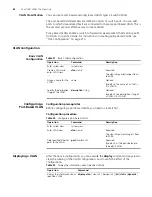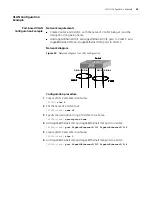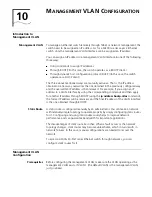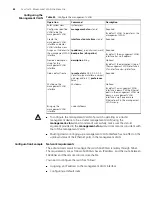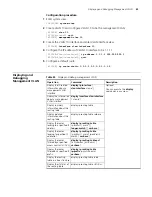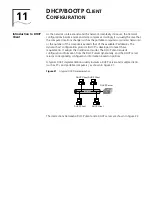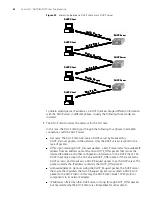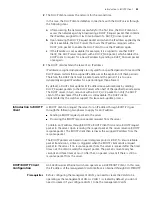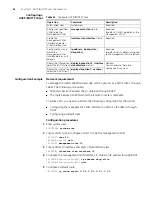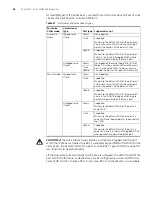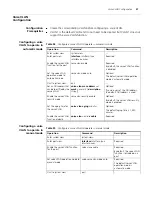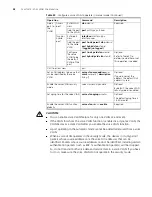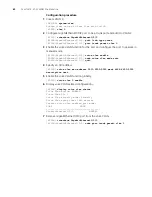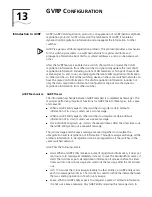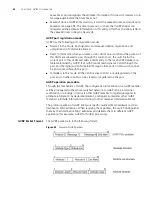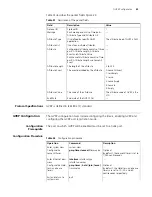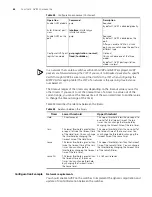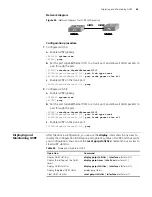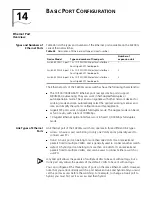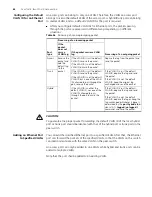
Introduction to BOOTP Client
53
2
The DHCP client accesses the network for the second time
In this case, the DHCP client establishes connections with the DHCP server through
the following steps.
a
After accessing the network successfully for the first time, the DHCP client can
access the network again by broadcasting a DHCP_Request packet that contains
the IP address assigned to it last time instead of a DHCP_Discover packet.
b
Upon receiving the DHCP_Request packet and, when the IP address applied by the
client is available, the DHCP server that owns the IP address responds with a
DHCP_ACK packet to enable the DHCP client to use the IP address again.
c
If the IP address is not available (for example, it is assigned to another DHCP
client), the DHCP server responds with a DHCP_NAK packet, which enables the
DHCP client to request for a new IP address by sending a DHCP_Discover packet
once again.
3
The DHCP client extends the lease of an IP address
IP addresses assigned dynamically are only valid for a specified period of time and the
DHCP servers reclaim their assigned IP addresses at the expiration of these periods.
Therefore, the DHCP client must be able to extend the period if it is to use a
dynamically assigned IP address for a period longer than allowed.
By default, a DHCP client updates its IP address lease automatically by sending
DHCP_Request packets to the DHCP server when half of the specified period expires.
The DHCP server, in turn, responds with a DHCP_ACK packet to notify the DHCP
client of the new lease if the IP address is still available. The DHCP clients
implemented by the switches support this lease auto-update process.
Introduction to BOOTP
Client
A BOOTP client can request the server for an IP address through BOOTP. It goes
through the following two phases to apply for an IP address.
■
Sending a BOOTP request packet to the server
■
Processing the BOOTP response packet received from the server
To obtain an IP address through BOOTP, a BOOTP client first sends a BOOTP request
packet to the server. Upon receiving the request packet, the server returns a BOOTP
response packet. The BOOTP client then retrieves the assigned IP address from the
response packet.
The BOOTP packets are based on user datagram protocol (UDP). To ensure reliable
packet transmission, a timer is triggered when the BOOTP client sends a request
packet to the server. If no response packet from the server is received after the timer
times out, the client resends the request packet. The packet is resent every five
seconds and three times at most. After that, no packet is resent if there is still no
response packet from the server.
DHCP/BOOTP Client
Configuration
An S4200G series Ethernet switch can operate as a DHCP/BOOTP client. In this case,
the IP address of the management VLAN interface is obtained through DHCP/BOOTP.
Prerequisites
Before configuring the management VLAN, you need to create the VLAN to be
operating as the management VLAN. As VLAN 1 is created by default, you do not
need to create it if you configure VLAN 1 to be the management VLAN.
Summary of Contents for 4200G 12-Port
Page 10: ...8 CONTENTS...
Page 14: ...4 ABOUT THIS GUIDE...
Page 46: ...32 CHAPTER 5 LOGGING IN THROUGH WEB BASED NETWORK MANAGEMENT SYSTEM...
Page 48: ...34 CHAPTER 6 LOGGING IN THROUGH NMS...
Page 60: ...46 CHAPTER 9 VLAN CONFIGURATION...
Page 64: ...50 CHAPTER 10 MANAGEMENT VLAN CONFIGURATION...
Page 80: ...66 CHAPTER 13 GVRP CONFIGURATION...
Page 98: ...84 CHAPTER 15 LINK AGGREGATION CONFIGURATION...
Page 112: ...98 CHAPTER 18 MAC ADDRESS TABLE MANAGEMENT...
Page 126: ...112 CHAPTER 19 LOGGING IN THROUGH TELNET...
Page 162: ...148 CHAPTER 20 MSTP CONFIGURATION...
Page 274: ...260 CHAPTER 29 IGMP SNOOPING CONFIGURATION...
Page 276: ...262 CHAPTER 30 ROUTING PORT JOIN TO MULTICAST GROUP CONFIGURATION...
Page 298: ...284 CHAPTER 33 SNMP CONFIGURATION...
Page 304: ...290 CHAPTER 34 RMON CONFIGURATION...
Page 338: ...324 CHAPTER 36 SSH TERMINAL SERVICES...
Page 356: ...342 CHAPTER 38 FTP AND TFTP CONFIGURATION...
Page 365: ...Information Center Configuration Example 351 S4200G terminal logging...
Page 366: ...352 CHAPTER 39 INFORMATION CENTER...
Page 378: ...364 CHAPTER 40 BOOTROM AND HOST SOFTWARE LOADING...
Page 384: ...370 CHAPTER 41 Basic System Configuration and Debugging...
Page 388: ...374 CHAPTER 43 NETWORK CONNECTIVITY TEST...
Page 406: ...392 CHAPTER 45 CONFIGURATION OF NEWLY ADDED CLUSTER FUNCTIONS...



